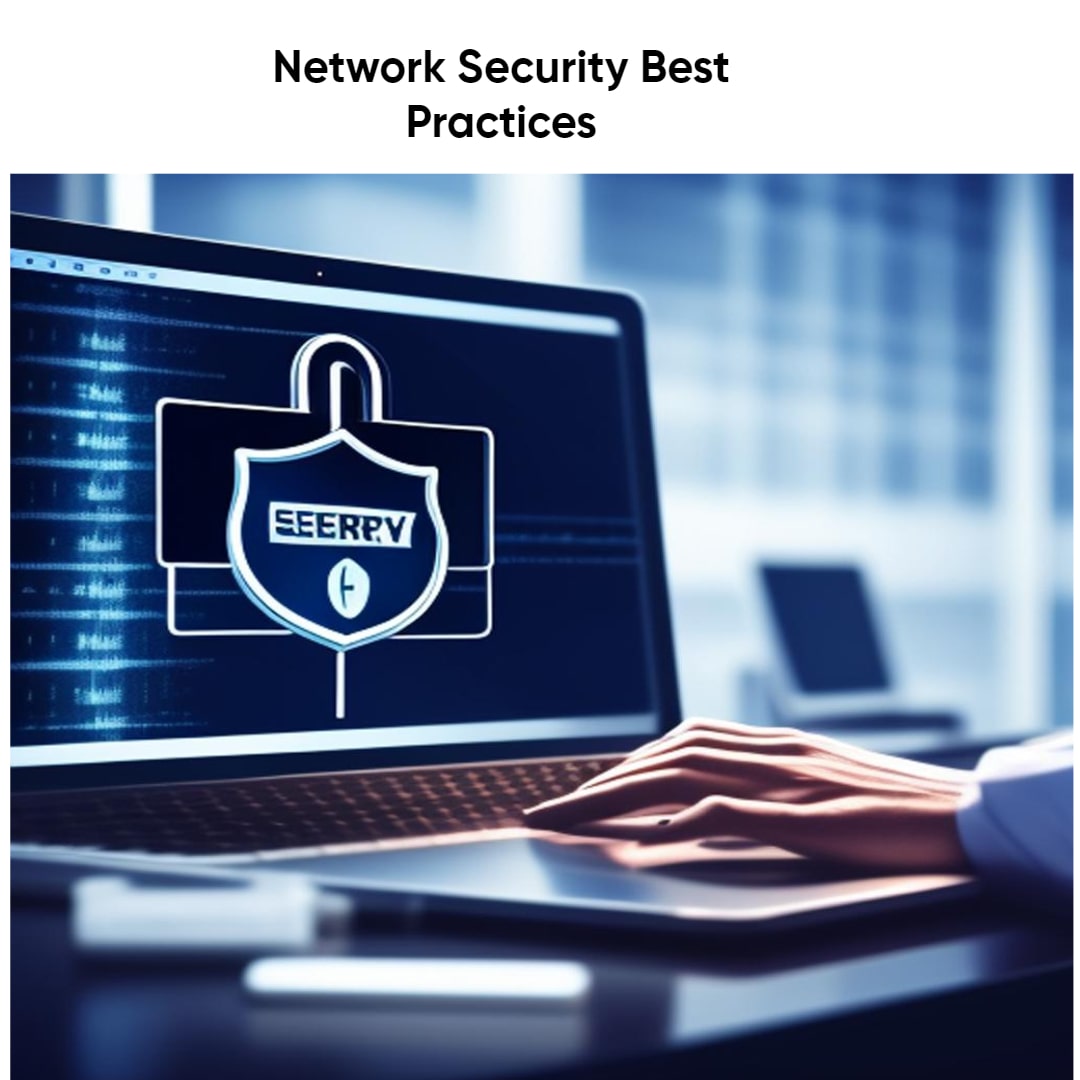Contents
- 1 Network Security Best Practices: Safeguarding Your Digital Landscape
- 2 Understanding Network Security Best Practices
- 3 Regular Updates and Patch Management
- 4 Robust Data Encryption
- 5 Employee Training and Awareness
- 6 Network Monitoring and Incident Response
- 7 Summary of Network Security Best Practices
- 8 Conclusion
Network Security Best Practices: Safeguarding Your Digital Landscape
In today’s interconnected world, where data flows seamlessly across networks, ensuring robust network security has become paramount. Organizations, both large and small, face a myriad of cyber threats that can compromise sensitive information, disrupt operations, and damage reputation. To mitigate these risks, implementing effective network security best practices is not just a choice, but a necessity. In this comprehensive guide, we will delve into the key strategies and measures that constitute the foundation of a secure digital environment.
Understanding Network Security Best Practices
Network security best practices encompass a range of proactive measures designed to safeguard an organization’s digital assets from unauthorized access, data breaches, and cyberattacks. These practices are not only essential for protecting sensitive information but also for maintaining the integrity and availability of critical systems and services.
Embracing a Multi-Layered Defense Strategy
Network Security Best Practices for a Resilient Defense
Implementing a multi-layered defense strategy is at the core of network security best practices. This approach involves deploying multiple layers of security controls at various points within the network infrastructure. These layers act as barriers, collectively creating a formidable defense against potential threats.
Firewalls: The First Line of Defense
Firewalls serve as the initial barricade against unauthorized access. By analyzing incoming and outgoing network traffic, firewalls can enforce access policies and block suspicious or malicious activities. Both hardware and software firewalls play a crucial role in filtering traffic based on predefined rules, thereby minimizing the risk of unauthorized breaches.
Intrusion Detection and Prevention Systems (IDPS)
IDPS are vital components that actively monitor network traffic for unusual patterns or signs of unauthorized access. These systems can detect and respond to intrusions in real-time, either by alerting administrators or by automatically blocking malicious traffic. By promptly identifying and mitigating threats, IDPS contribute significantly to maintaining network security.
Secure Access Controls and Authentication
Implementing strong access controls is a cornerstone of network security. Utilizing robust authentication mechanisms such as two-factor authentication (2FA) and biometric verification adds an extra layer of protection. By ensuring that only authorized personnel can access sensitive data and systems, organizations can minimize the risk of data breaches.
Regular Updates and Patch Management
Strengthen Security through Timely Updates
Software vulnerabilities provide a gateway for cybercriminals to exploit systems. Regular updates and patch management are crucial network security practices that help address these vulnerabilities and enhance overall system security.
Operating System and Software Updates
Keeping operating systems and software up to date is imperative to prevent security gaps. Vendors often release patches and updates to address known vulnerabilities. Failing to apply these updates promptly could leave systems susceptible to attacks. Automated patch management solutions can streamline this process and ensure timely updates.
Firmware and Hardware Updates
Network devices such as routers, switches, and firewalls also require regular updates to fix security flaws and improve performance. Firmware and hardware updates should be part of routine maintenance to maintain a secure network infrastructure.
Robust Data Encryption
Elevating Security with Data Encryption
Encrypting data adds an extra layer of protection, rendering it unreadable to unauthorized entities even if they manage to access it. This practice is especially crucial when transmitting sensitive information over the network.
Transport Layer Security (TLS)
TLS encryption secures data transmission over networks, such as when browsing websites or sending emails. Websites with “https” in their URLs use TLS to establish a secure connection between the user’s device and the server, ensuring that data exchanged remains confidential.
Full Disk Encryption
Full disk encryption involves encrypting an entire storage device, such as a hard drive or a USB stick. This prevents unauthorized access to data in case the device is lost or stolen. Even if the physical storage medium falls into the wrong hands, the encrypted data remains protected.
Employee Training and Awareness
The Human Element in Network Security
While technological measures are critical, the human factor plays a significant role in network security. Employees, often unknowingly, can become conduits for cyber threats. Proper training and awareness programs are essential to cultivate a security-conscious workforce.
Phishing Awareness and Prevention
Phishing attacks remain one of the most common and effective cyber threats. Training employees to recognize phishing attempts, suspicious links, and email scams can significantly reduce the risk of falling victim to these attacks.
Social Engineering Education
Cybercriminals often exploit psychological manipulation to deceive individuals into divulging sensitive information or taking harmful actions. Educating employees about various social engineering tactics empowers them to identify and thwart such attempts.
Network Monitoring and Incident Response
Proactive Surveillance and Rapid Response
Continuous network monitoring is a proactive approach to identifying and mitigating potential threats before they escalate. Alongside monitoring, having a well-defined incident response plan ensures that, in the event of a breach, the organization can take swift and effective action.
Intrusion Detection Systems (IDS)
IDS continuously scan network traffic for signs of unauthorized or suspicious activities. When anomalous behavior is detected, alerts are triggered, allowing security teams to investigate and take necessary actions to prevent potential breaches.
Incident Response Planning
An incident response plan outlines the step-by-step process to follow when a security breach occurs. It includes identifying the breach, containing the damage, eradicating the threat, and recovering normal operations. Regularly testing and updating this plan is essential to ensure its effectiveness.
Summary of Network Security Best Practices
- Firewall Implementation: Set up firewalls at network perimeters to filter incoming and outgoing traffic. Firewalls can prevent unauthorized access and block malicious activities.
- Regular Updates: Keep all software, operating systems, and applications updated with the latest security patches. Vulnerabilities in outdated software can be exploited by attackers.
- Strong Authentication: Enforce strong password policies and consider multi-factor authentication (MFA) for an extra layer of security. MFA requires users to provide multiple forms of identification before granting access.
- Access Control: Implement the principle of least privilege (PoLP). Users should only have access to the resources necessary for their roles, reducing the potential damage in case of a breach.
- Network Segmentation: Divide your network into segments or VLANs. This limits the lateral movement of attackers, as they cannot easily jump between segments.
- Encryption: Encrypt data both in transit (using protocols like HTTPS, TLS) and at rest (using encryption tools or features provided by your operating system or database).
- Intrusion Detection and Prevention Systems (IDPS): Use IDPS to monitor network traffic for suspicious activities and automatically respond to potential threats.
- Regular Backups: Perform regular backups of critical data and systems. This helps you recover quickly in case of data loss due to a breach or other issues.
- Security Audits and Penetration Testing: Conduct regular security audits and penetration tests to identify vulnerabilities and address them proactively.
- Employee Training and Awareness: Educate your employees about security best practices, social engineering attacks, and how to recognize phishing attempts.
- Patch Management: Establish a patch management process to ensure all systems and software are up to date with the latest security patches.
- Mobile Device Management (MDM): If applicable, implement MDM solutions to secure and manage mobile devices that connect to your network.
- Application Security: Ensure that the applications you use follow secure coding practices and conduct regular security assessments of your applications.
- Email Security: Use email filtering solutions to block phishing emails and malicious attachments. Train users to be cautious with email links and attachments.
- Incident Response Plan: Develop a comprehensive incident response plan that outlines steps to take in case of a security breach. This helps minimize damage and downtime.
- Network Monitoring and Logging: Implement network monitoring and logging solutions to track and analyze network activity. This can aid in identifying and investigating security incidents.
- Vendor Security: Evaluate the security practices of third-party vendors before integrating their products or services into your network.
- Physical Security: Secure physical access to your network equipment and servers to prevent unauthorized physical tampering.
- Remote Access Security: If remote access is necessary, use secure VPN connections and enforce strong authentication for remote users.
- Regular Security Reviews: Continuously review and update your security measures to adapt to new threats and vulnerabilities.
Conclusion
In the ever-evolving landscape of cyber threats, network security best practices remain the cornerstone of a resilient defense. Embracing a multi-layered defense strategy, staying vigilant through regular updates, implementing robust data encryption, fostering employee training and awareness, and establishing effective network monitoring and incident response protocols collectively create a strong security posture. By adopting and consistently adhering to these practices, organizations can mitigate risks, safeguard sensitive information, and navigate the digital realm with confidence. Remember, network security is not a one-time effort; it’s an ongoing commitment to protecting what matters most.

